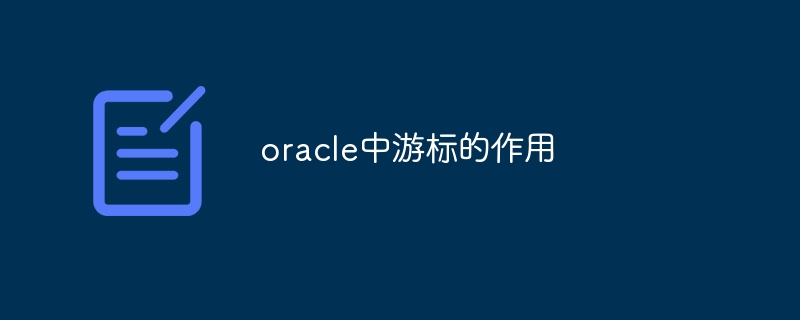The role of cursor in Oracle
- 下次还敢Original
- 2024-05-09 21:48:19658browse
The cursor is a mechanism in Oracle database to traverse the result set and process data row by row. It is mainly used for: traversing the result set, processing large data sets, updating or deleting data row by row, transaction processing

The role of cursors in Oracle
What is a cursor?
A cursor is a mechanism in Oracle Database that allows you to step through rows of data in a result set. It serves as a pointer to the current row, and can be navigated between rows for retrieval, update, or delete operations.
The main function of cursors:
- Traverse the result set: The cursor enables you to traverse the query result set row by row. You can use the FETCH command to get data for the current row, and then use the NEXT or PRIOR command to move between rows.
- Handling large data sets: Cursors are useful when the result set is so large that it is difficult to load it into memory at once. It allows you to process data row by row to reduce memory consumption.
- Update or delete data row by row: Cursors can be used to update or delete data row by row. This allows you to make changes to individual rows when needed without affecting other rows in the result set.
- Transaction processing: Cursors can be used in conjunction with transactions to ensure that all operations have completed successfully before making changes to the data.
Types of Cursors:
There are two main types of cursors in Oracle:
- Explicit Cursors :Needs to be explicitly declared and managed in the program.
- Implicit cursors: Automatically created and managed by Oracle for SELECT statements and other operations that do not support explicit cursors.
Examples of using cursors:
<code class="oracle">-- 创建显式游标 DECLARE cursor_name CURSOR FOR SELECT * FROM table_name; -- 遍历结果集 OPEN cursor_name; -- 获取当前行 FETCH cursor_name INTO variable_list; -- 导航到下一行 NEXT cursor_name; -- 关闭游标 CLOSE cursor_name;</code>
Utilizing cursors can improve application performance, scalability, and data integrity.
The above is the detailed content of The role of cursor in Oracle. For more information, please follow other related articles on the PHP Chinese website!

